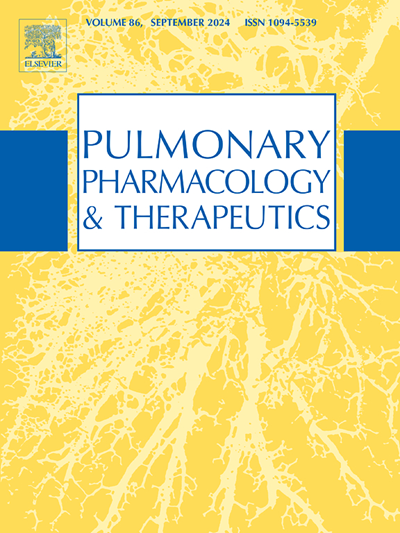FTO通过m6A去甲基化修饰调控肺动脉平滑肌细胞的增殖和凋亡。
IF 2.8
3区 医学
Q2 PHARMACOLOGY & PHARMACY
引用次数: 0
摘要
背景:研究fto介导的n6 -甲基腺苷(m6A)去甲基化是否影响小鼠肺动脉平滑肌细胞(PASMCs)的增殖/凋亡表型。方法:建立PASMCs缺氧模型,检测FTO蛋白表达及m6A修饰水平的变化。通过细胞转染、m6A表达谱、mRNA稳定性测试和蛋白- rna结合实验,探讨FTO及其下游靶点CACNA1d对PASMC增殖和凋亡的影响。结果:缺氧可下调PASMCs FTO表达,上调m6A修饰,导致PASMCs增殖增强,凋亡减少。FTO的过表达逆转了这些作用,而在常氧条件下FTO的敲低模拟了缺氧诱导的“促增殖和抗凋亡”的变化。全基因组m6A分析鉴定了CACNA1d作为FTO的潜在下游靶点,YTHDC1作为m6A读取器。FTO结合CACNA1d mRNA并通过m6A去甲基化降低其稳定性。CACNA1d敲低可部分减轻缺氧诱导的PASMC增殖和凋亡的变化。此外,当缺氧培养恢复到常氧培养时,PASMCs的凋亡水平恢复到缺氧前水平,并且在过表达FTO或敲低CACNA1d表达后仍能观察到这种情况。结论:缺氧PASMCs中FTO下调可增加m6A修饰,通过提高CACNA1d表达促进细胞增殖,抑制细胞凋亡。本文章由计算机程序翻译,如有差异,请以英文原文为准。
FTO regulates the proliferation and apoptosis of pulmonary artery smooth muscle cells through m6A demethylation modification
Background
To investigate whether FTO-mediated N6-methyladenosine (m6A) demethylation affects the proliferative/apoptotic phenotype of mouse pulmonary artery smooth muscle cells (PASMCs).
Methods
The hypoxia model of PASMCs was established to examine changes in FTO protein expression and m6A modification levels. Cell transfection, m6A expression profiling, mRNA stability testing, and protein-RNA binding assays were used to explore the effects of FTO and its downstream target, CACNA1d, on PASMC proliferation and apoptosis.
Results
Hypoxia downregulated FTO expression and upregulated m6A modification, leading to enhanced proliferation and reduced apoptosis in PASMCs. Overexpression of FTO reversed these effects, while FTO knockdown under normoxia mimicked the hypoxia-induced "pro-proliferative and anti-apoptotic" changes. Genome-wide m6A profiling identified CACNA1d as a potential downstream target of FTO, with YTHDC1 acting as the m6A reader. FTO binds CACNA1d mRNA and reduces its stability via m6A demethylation. CACNA1d knockdown partially mitigated the hypoxia-induced changes in PASMC proliferation and apoptosis. In addition, when the hypoxic culture was returned to normoxic culture, the level of apoptosis in PASMCs was restored to the pre-hypoxic level, and this was still observed after the overexpression of FTO or knockdown of CACNA1d expression.
Conclusion
FTO downregulation in hypoxic PASMCs increases m6A modification, promoting proliferation and inhibiting apoptosis by enhancing CACNA1d expression.
求助全文
通过发布文献求助,成功后即可免费获取论文全文。
去求助
来源期刊
CiteScore
6.20
自引率
0.00%
发文量
41
审稿时长
42 days
期刊介绍:
Pulmonary Pharmacology and Therapeutics (formerly Pulmonary Pharmacology) is concerned with lung pharmacology from molecular to clinical aspects. The subject matter encompasses the major diseases of the lung including asthma, cystic fibrosis, pulmonary circulation, ARDS, carcinoma, bronchitis, emphysema and drug delivery. Laboratory and clinical research on man and animals will be considered including studies related to chemotherapy of cancer, tuberculosis and infection. In addition to original research papers the journal will include review articles and book reviews.
Research Areas Include:
• All major diseases of the lung
• Physiology
• Pathology
• Drug delivery
• Metabolism
• Pulmonary Toxicology.

 求助内容:
求助内容: 应助结果提醒方式:
应助结果提醒方式:


